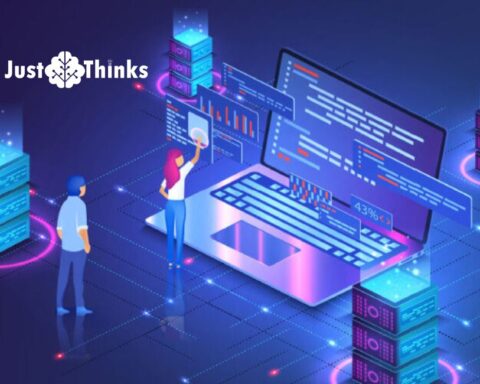Introduction
Traffic management has long been a crucial aspect of urban planning and development. As cities continue to grow and the number of vehicles on the road increases, effective traffic management becomes more challenging and important. In this context, traffic software plays a pivotal role in optimizing traffic flow, reducing congestion, enhancing safety, and promoting sustainability. This essay explores the evolution and impact of traffic software in modern urban environments, examining its key components, benefits, and future prospects.
The Evolution of Traffic Software
Historical Perspective
Traffic software has come a long way since its inception. Historically, traffic management relied on manual control, such as traffic wardens and manually operated traffic signals. The advent of electronic traffic signals in the early 20th century marked the first step towards automation in traffic management. These signals used basic timing mechanisms but were far from the intelligent systems we have today.
Emergence of Intelligent Traffic Management
The rapid advancements in computing and communication technologies have led to the development of intelligent traffic management systems. These systems incorporate various software components that collect, process, and analyze data to make informed decisions regarding traffic control.
Key Components of Traffic Software
Traffic Control Systems
Traffic control systems are the backbone of traffic software. They encompass a network of sensors, cameras, and traffic lights connected to a central control hub. These systems can detect traffic volume, congestion, and accidents in real-time. When an issue is identified, the system can adjust traffic light timings to alleviate congestion and reroute traffic.
Traffic Prediction and Simulation Software
Traffic prediction and simulation software utilize historical traffic data and predictive algorithms to estimate future traffic conditions. This helps authorities plan for potential congestion and develop strategies to mitigate it. Moreover, it assists in optimizing traffic signal timings to reduce traffic jams.
Smart Traffic Signals
Modern traffic signals are no longer mere time-based systems. They are equipped with adaptive traffic control algorithms that respond dynamically to real-time traffic conditions. Smart traffic signals can detect queues and adjust green light durations accordingly, reducing unnecessary idling and fuel consumption.
Traffic Apps and Navigation Software
Traffic apps like Google Maps and Waze provide real-time traffic information and suggest alternate routes to drivers. These apps rely on traffic data gathered from various sources, including road sensors and user-generated data. They help users make informed decisions and reduce congestion by distributing traffic more evenly across road networks.
Benefits of Traffic Software
Congestion Reduction
One of the most significant advantages of traffic software is its ability to reduce traffic congestion. By dynamically adjusting traffic signals, rerouting drivers, and optimizing traffic flow, these systems help prevent gridlock and reduce travel times.
Improved Safety
Traffic software also contributes to road safety by identifying and responding to accidents and hazardous conditions promptly. This minimizes the risk of secondary accidents and helps emergency responders reach the scene more quickly.
Environmental Sustainability
Reducing congestion and improving traffic flow also has environmental benefits. Reduced idling time and smoother traffic flow lead to lower fuel consumption and reduced emissions. Traffic software thus plays a role in achieving sustainability goals.
Enhanced Public Transportation Integration
Traffic software can be integrated with public transportation systems, allowing for better coordination between buses, trams, and trains. This integration improves the overall efficiency of the transportation network and encourages the use of public transportation.
Data-Driven Decision Making
The data collected by traffic software can be analyzed to make data-driven decisions in urban planning and development. This helps cities allocate resources more effectively and plan infrastructure improvements based on actual traffic patterns.
Challenges and Future Prospects
Data Privacy and Security
As traffic software relies on a vast amount of data, data privacy and security concerns are a growing challenge. Protecting the data from unauthorized access and ensuring the privacy of individuals on the road is a critical issue that needs to be addressed.
Interoperability
Different cities and regions may have various traffic software systems in place. Ensuring interoperability and standardization is essential to avoid issues when crossing city or state borders.
Infrastructure Investment
Implementing and maintaining traffic software requires a significant investment in infrastructure and technology. Cities need to allocate sufficient resources to ensure the effectiveness of these systems.
Future Innovations
The future of traffic software is promising. With advancements in artificial intelligence, machine learning, and the Internet of Things, traffic software will become even more intelligent and responsive. Autonomous vehicles will also be integrated into traffic management systems, further changing the landscape of urban transportation.
Conclusion
Traffic software has revolutionized the way cities manage their traffic, offering a myriad of benefits, including congestion reduction, improved safety, and enhanced sustainability. These systems, consisting of traffic control systems, prediction software, smart traffic signals, and navigation apps, have come a long way from traditional traffic management techniques.
While traffic software has made remarkable progress, it still faces challenges, including data privacy and security, interoperability, and infrastructure investment. Nevertheless, as technology continues to evolve, traffic software will play an increasingly vital role in ensuring efficient and sustainable urban transportation systems. The future of traffic software promises to be even more intelligent, data-driven, and integrated, ultimately leading to smoother and safer traffic in modern urban environments.






